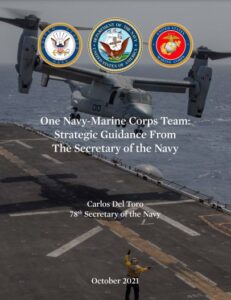
Secretary of the Navy Carlos Del Toro released his strategic guidance on Oct. 8 focusing on deterrence and advances against China. The strategic guidance aims to inform all activities within the Department of the Navy covering planning, investments, budgeting and prioritization of resources and personnel. Del Toro said the document is the principal guidance for the Navy Department and intends to align other service-specific documents like the Chief of Naval Operations’ Navigation Plan, Marine Corps Commandant’s Force Design 2030 and…

 By
By 











